Explore the latest insights from top science journals in the Muser Press daily roundup (July 29, 2025), featuring impactful research on climate change challenges.
In brief:
Tropical fishes on the move survive better with temperate neighbours
According to a new study, performed jointly by researchers from the University of Adelaide and the University of Technology Sydney, tropical fish species that live in mixed shoals, not solely among other tropical fishes, became bolder and fed more, which may aid them in surviving longer and growing larger on temperate reefs.
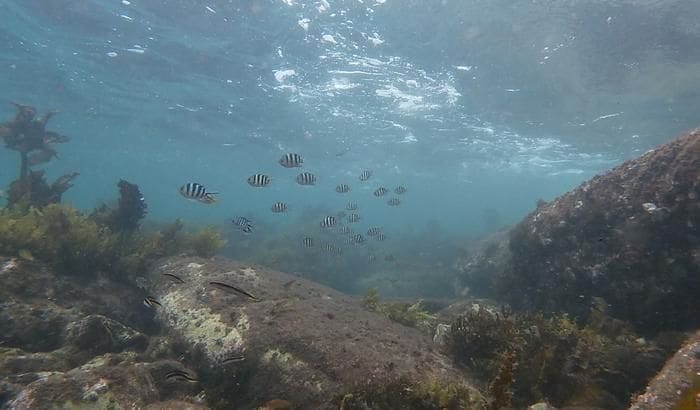
“This result suggests that novel species interactions, which are often assumed to be stressful or competitive, can benefit some range-extending species,” says lead author Dr Angus Mitchell, from the University of Adelaide’s School of Biological Sciences.
“Shoaling with locals may help tropical fish learn about new predators, food sources, and environmental cues. This reduces uncertainty and boosts survival in unfamiliar ecosystems.”
This work builds upon previous University of Adelaide research that found tropical fish experience decreased physiological performance in temperate ecosystems.
“Our new work demonstrates that novel shoaling interactions could buffer against maladaptive physiological responses,” says co-author Dr Chloe Hayes, from the University’s School of Biological Sciences.
The new study, published in the Journal of Animal Ecology, found that while tropical fishes may thrive in these new environments, the temperate fishes whose habitat is being encroached upon do not enjoy a similar benefit.
“In the subtropics, we saw that temperate fish species, including the Australian Mado, suffered. They were more likely to flee and fed less when tropical species were present,” says co-author Professor David Booth, from the University of Technology Sydney.
These interactions may force temperate fish species out of their warmest native areas permanently.
“Subtropical reefs already sit at the thermal limits for many temperate fish. Added stress from tropical competitors could tip them over the edge,” says project leader Professor Ivan Nagelkerken, from the University of Adelaide.
Knowledge of the interspecies dynamics that occur due to climate change-induced migration will be important when designing conservation strategies.
“Our research shows that climate-driven species redistributions are not just about temperature. They are also about the new relationships formed in recipient ecosystems,” says Professor Nagelkerken.
“As the world’s oceans continue to heat up, understanding the outcomes of these novel interactions, whether friend or foe, will be critical for predicting how reef communities will be reshaped in a rapidly warming ocean.”
Journal Reference:
Mitchell, A., Hayes, C., Coni, E. O. C., Booth, D. J., & Nagelkerken, I., ‘Tropical fishes can benefit more from novel than familiar species interactions at their cold-range edges’, Journal of Animal Ecology online, 1–14 (2025). DOI: 10.1111/1365-2656.70100
Article Source:
Press Release/Material by Johnny von Einem | University of Adelaide
A leading-edge review maps path to better Asian monsoon predictions under global change
Led by Professor Bin Wang from the University of Hawaii at Manoa, an international group of scientists synthesizes decades of research to chart a roadmap for more reliable and actionable monsoon seasonal forecasts.
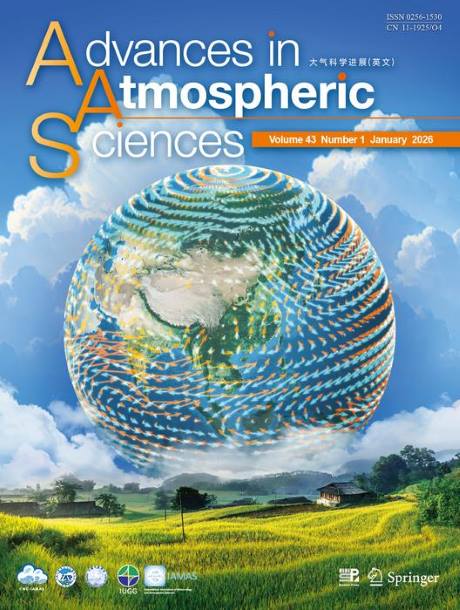
The Asian monsoon is one of the world’s most influential climate systems, directly impacting the weather, water resources, agriculture, and livelihoods of billions of people across Asia. Accurate seasonal prediction of the monsoon, especially rainfall, is crucial for disaster prevention, food security, and economic planning in the region. While significant progress has been reached over the past two decades, current climate models still struggle with systematic biases, and the reliability of traditional predictors is changing.
The review systematically summarizes the foundations of monsoon climate prediction, highlighting three key theoretical pillars: El Niño-Southern Oscillation (ENSO), atmospheric teleconnections, and monsoon-ocean interactions. ENSO, in particular, stands out as a major source of monsoon predictability, with different phases and types of ENSO events exerting distinct regional impacts on Asian rainfall patterns.
However, the authors emphasize that ENSO is not the only factor at play. Other sources of predictability, such as the Indian Ocean Dipole, land-atmosphere interactions, and remote influences from the Atlantic, North Pacific, and polar regions, also significantly shape monsoon variability. “A comprehensive understanding of these diverse sources of predictability is essential for improving monsoon forecasts,” states Prof. Wang.
The team underscores that external forcings, including greenhouse gases and aerosols, are significantly altering the monsoon system. These factors not only alter shift rainfall patterns but also increase the frequency and intensity of extreme weather events, making the monsoon more variable and more complicated to predict.
In addition, the authors discuss recent advancements in forecasting models and methods, including dynamical models, empirical prediction models, and hybrid dynamic-empirical models. Despite these advancements, significant challenges remain. Current climate models still struggle to accurately simulate key monsoon processes, such as convection and land-sea-air interactions, resulting in systematic biases. Monsoon predictability itself is inherently unstable due to the complex interplay of internal climate variability, remote forcing, and evolving ENSO characteristics.
To overcome these challenges, the review outlines a path forward, recommending a multi-pronged approach. “The future of monsoon prediction lies in integrating cutting-edge technologies with fundamental climate science,” Prof. Wang explained. “This includes leveraging artificial intelligence to capture complex non-linear relationships, developing models that can better simulate key physical processes, and improving our sub-seasonal predictions to bridge the gap between weather and climate.”
The review emphasizes that strengthening observational networks, enhancing model accuracy, integrating research and operational forecasting, and promoting international collaboration and data sharing are also critical steps forward.
“We hope that this review will inspire new research and innovation to advance monsoon prediction further, ultimately supporting better risk management and adaptation across Asia,” Prof. Wang concluded.
The review is included in a special issue ‘Global and regional monsoons: State of the art and perspectives’ organized by World Climate Research Programme Monsoon Panel.
Journal Reference:
Wang, B., Liu, F., Wu, R. et al., ‘Advancing Asian Monsoon Climate Prediction under Global Change: Progress, Challenges, and Outlook’, Advances in Atmospheric Sciences (2025). DOI: 10.1007/s00376-025-5019-z
Article Source:
Press Release/Material by Institute of Atmospheric Physics (IAP) | Chinese Academy of Sciences (CAS)
Climate change significantly worsened deadly 2022 Durban floods
The catastrophic Durban floods of April 2022, which claimed 544 lives and displaced tens of thousands, were made significantly worse by climate change, a new study led by Wits University has confirmed.
The research, published in the journal Communications Earth & Environment, is a formal scientific attribution of the event. It shows that rainfall during the storm of 11–12 April 2022 was between 40% and 107% heavier than it would have been in a cooler, pre-industrial climate.
Using cutting-edge climate modelling developed by Professor Francois Engelbrecht, Director of the Global Change Institute at the University of the Witwatersrand (Wits), in collaboration with national and international partners, the study represents a major leap forward in the continent’s ability to analyse how global warming is driving extreme weather.
“Three years after President Cyril Ramaphosa said these floods were part of climate change, science can now confirm he was correct,” says Engelbrecht. “However, we need to be able to do these assessments in real time, so that our early warning and response systems can keep pace with the escalating risks,” says Engelbrecht. There are also clear links between attribution science and the increasingly prominent policy space of ‘Loss & Damage’, which explores how developing countries and be supported following the devastating impacts of extreme weather events.
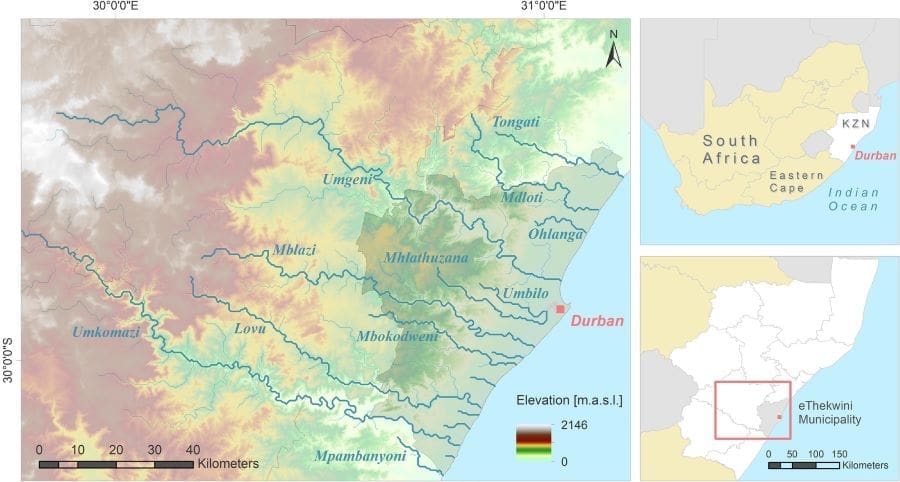
The April 2022 floods remain the deadliest flood disaster in South Africa’s recorded history. More than 500 mm of rain fell in just two days in parts of KwaZulu-Natal as measured by weather stations of the Agricultural Research Council. The deluge destroyed homes, infrastructure, and livelihoods across the province.
The new study used a ‘kilometre-scale’ climate attribution model and was made possible by the high performance computers of the Centre for High Performance Computing (CHPC) in Cape Town. It simulated the storm in both today’s warmed climate and a counterfactual world without human-induced global warming. The unprecedented level of detail in the model makes the findings particularly robust.
The research identified three key drivers behind the intensified rainfall:
- A warmer atmosphere, fuelled by greenhouse gases, holds more moisture;
- The Agulhas Current has warmed in recent decades, increasing ocean evaporation and feeding moisture into coastal storms;
- Changes in wind patterns are funnelling more moist air into KwaZulu-Natal.
The team also modelled future scenarios, warning that storms in eastern South Africa will likely become even more intense as the planet continues to warm.
Building resilience in a warming world
The climate attribution model used in the study took nearly three years to develop after President Ramaphosa’s initial comments. “We need to move from academic modelling to near-operational capability – where we can confirm within days, not years, whether climate change intensified a disaster. With even faster next generation computers being installed at the CHPC and our newly established modelling system, this is absolutely achievable,” says Engelbrecht.
“In the short term, we need robust Disaster Risk Reduction plans that can evacuate people from high-risk areas with just a few days’ notice,” said Engelbrecht. “This demands advanced Early Warning Systems and, importantly, trust in those systems at community level. In the long term, we must help people to relocate to safer locations – above the flood line. But this is a difficult and costly process in cities that are growing rapidly and informally.”
Local leadership rising to the challenge
Mayor Cyril Xaba of eThekwini has welcomed the research findings. In eThekwini, local government is already taking action. Working with the University of KwaZulu-Natal, the municipality has developed a Community-Based Flood Early Warning System (CBFEWS) in Quarry Road West Informal Settlement. During the April 2022 floods, the system was activated, and no lives were lost, despite over 120 dwellings being washed away.
“We’ve seen time and again the value of working with communities to create very local flood warnings,” says Dr Sean O’Donoghue, Senior Manager: Climate Change Adaptation at eThekwini Municipality. “This climate attribution study marks a watershed moment – we now have definitive, scientific evidence of how climate change is impacting us, and more importantly, what we need to plan for.”
Through the INACCT Resilience project, funded by CLARE and in partnership with ICLEI Africa, the City is expanding localised warning systems across vulnerable areas. It is also growing the Transformative Riverine Management Programme, which employs local residents to clear debris from waterways – a key step in managing future floods.
At the provincial level, the Department of Water and Sanitation, uMngeni-Thukela Water, and research partnerships are collaborating through international programmes such as WaRisCo (under the WASA programme) and REPRESA (CLARE programme) to reduce both flood and drought risks.
“The silver lining to the dark storm clouds threatening South Africa’s east coast is that government at all levels is embracing climate science to protect lives. But efforts must now expand rapidly – especially into the Eastern Cape, where risks are rising,” says Engelbrecht.
Journal Reference:
Engelbrecht, F.A., Steinkopf, J., Chang, N. et al., ‘Extreme event attribution using km-scale simulations reveals the pronounced role of climate change in the Durban floods’, Communications Earth & Environment 6, 506 (2025). DOI: 10.1038/s43247-025-02460-5
Article Source:
Press Release/Material by University of the Witwatersrand (Wits)
Warming Arctic lakes may release more methane than expected
The findings are important because methane is over 25 times more powerful than carbon dioxide as a greenhouse gas. Arctic lakes are already major natural methane sources globally, but the processes that control how methane is produced and released from lake sediments have remained poorly understood – until now.
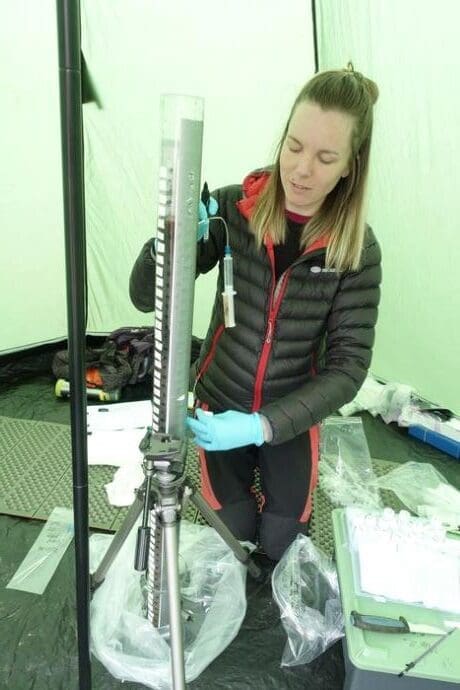
Linking ecosystem productivity to methane emissions
In this study, PhD candidate Marie Bulínová from the Geosciences Department at UiT The Arctic University of Norway worked with an international team that investigated 10 Arctic lakes across Svalbard and subarctic Scandinavia. They found that methane production in lake sediments was highest where lakes had greater productivity – more algae, aquatic plants, and land vegetation, and shallower depths.
“We were surprised by how clearly the productivity of the ecosystem was linked to methane production,” said Marie. “Our results show that warmer and wetter conditions increase biological productivity in Arctic lakes, which in turn drives methane emissions from their sediments.”
Most methane was produced within the top 10 cm of lake sediment. In these shallow layers, the combination of fresh, organic-rich material and enhanced microbial activity creates ideal conditions for methane generation. The researchers calculated how much methane is likely to diffuse from the sediment into the overlying water and eventually into the atmosphere.
Striking differences between Arctic lakes and beyond
The team compared their findings with data from over 60 lakes worldwide. This revealed that methane fluxes from individual Arctic lakes are generally lower than those in tropical or temperate regions, but still significant and highly variable considering the large number of lakes in northern landscapes. And surprisingly, they are similar to some boreal lakes.
Marie explained: “One of the striking aspects of this work is how different Arctic lakes are from each other. Some release much more methane than others, depending on local factors like vegetation cover, lake shape, or sediment composition. That’s why it’s essential to study a wide range of lake types if we want to understand the Arctic’s role in future climate feedbacks.”
The researchers also built predictive models using machine learning to identify the most important factors driving methane emissions across different biomes. This helped to highlight the importance of primary productivity and climate variables – especially temperature and precipitation.
Tracking climate feedbacks in a changing Arctic
This research adds an important piece to the puzzle of how Arctic ecosystems respond to climate change. As temperatures rise and growing seasons lengthen, Arctic landscapes are greening and lakes are expected to become more productive, which could lead to higher methane emissions.
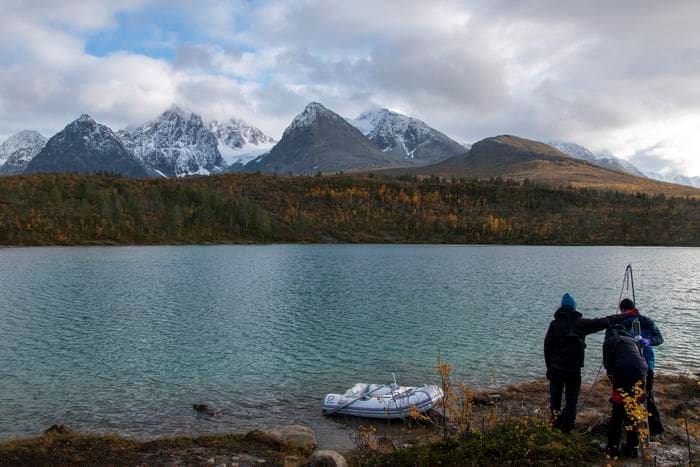
The study underscores the importance of including lake sediments in Arctic greenhouse gas budgets. It also shows that seemingly small environmental changes can have large effects on methane emissions.
“The Arctic is changing rapidly, and we need to understand all the feedbacks involved,” said Marie. “Our work suggests that increases in ecosystem productivity – something we could think of being positive – can also increase methane release and further accelerate warming.”
Access the research and learn more
The study is published in Journal of Geophysical Research: Biogeosciences as a result of collaborative work between researchers from Norway, Sweden, and Spain.
Marie Bulínová is a PhD candidate in the Department of Geosciences at UiT The Arctic University of Norway. Her research focuses on sediment geochemistry and greenhouse gas dynamics in Arctic lakes. Marie is supervised by Anders Schomacker, Professor of terrestrial Quaternary geology, Dr. Alexandra Rouillard (now at Umeå University, Sweden), and Prof. Giuliana Panieri. This study was designed as a part of PolarCH4ives, a broader methane-focused project funded by the Research Council of Norway KLIMAFORSK program.
Journal Reference:
Bulínová, M., Schomacker, A., Kjellman, S. E., Gudasz, C., Olid, C., Rydberg, J., et al., ‘Increased ecosystem productivity boosts methane production in Arctic lake sediments’, Journal of Geophysical Research: Biogeosciences 130, 7: e2024JG008508 (2025). DOI: 10.1029/2024JG008508
Article Source:
Press Release/Material by Kim Bredesen | UiT The Arctic University of Norway
Featured image credit: Gerd Altmann | Pixabay




